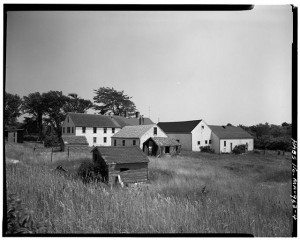Though early American society embraced self-sufficiency, people in authority did recognize that some people could not provide for themselves (widows/orphans/disabled) and that a person could fall upon hard times despite their best efforts. Churches and municipalities usually provided short-term relief in a person’s home, but a long-term situation was another matter.
Early on, the poor were simply auctioned off to the lowest bidder. The auction’s winner provided food, shelter, clothing, etc. to the pauper (and perhaps to his family) in exchange for the pauper’s labor. The arrangement was more like being an indentured servant than a slave, but it was definitely not anyone’s preferred way of life. As can be imagined, this system led to many abuses, and some auctioned paupers were badly treated, overworked, and nearly starved.
Poorhouses were set up (usually by counties) to be more efficient than this auctioning system. Authorities also hoped that the poor who resided in them could learn discipline and good habits so that they could get out and become useful citizens. They were not meant to be pleasant, but rather, to discourage residence by anyone who was at all capable of working. Children would be separated from parents, and wives from husbands. Many poorhouse inmates had to wear a dreary uniform that further shamed them. Residents were required to work, if able, often at the accompanying “poor farm.”
Going to the poorhouse was so dreadful that mournful poems and songs were written about the experience. One such effort by Will Carleton was called “Over the Hill to the Poorhouse” and ended with this stanza:
Over the hill to the poorhouse—my child’rn dear, goodbye!
Many a night I’ve watched you when only God was nigh:
And God’ll judge between us; but I will always pray
That you shall never suffer the half I do today. (1882)




